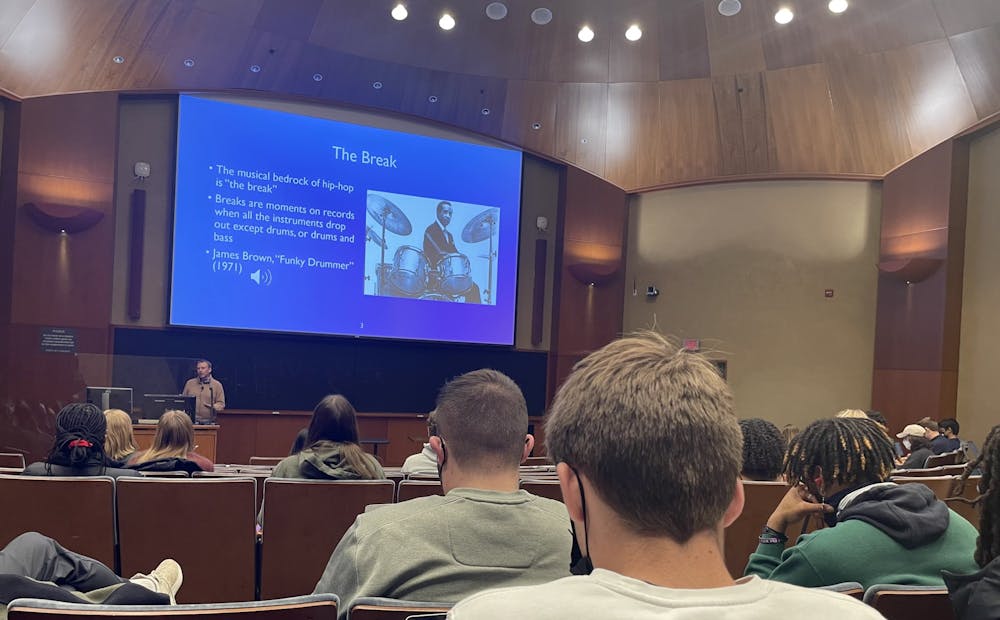As any arts or humanities student at the University knows, there are a wide variety of arts departments and courses to choose from. Music, drama, English literature and traditional art are just a few options.
But while many of these departments cover a range of topics, it is obvious when browsing through course catalogs that the majority of courses only cover art forms centered around whiteness and the West. Nevertheless, the University has gradually expanded its course offerings to include a selection of arts courses related to specific cultures, including those specializing in African or African-American art.
One of the longest-running arts courses covering Black art is History of Jazz Music. Conceived by Music Prof. Scott DeVeaux in 2006, this course surveys jazz music from its inception in New Orleans through its rise in popularity throughout the 20th century. As DeVeaux explains in this course, jazz is not an exclusively African American art form, but rather an amalgamation of various cultures’ music primarily rooted in African American foundations.
Emerging from a blend of African American musical traditions, such as ragtime, blues and more, jazz spread widely across the nation after the first recordings were created in 1917. Many Black artists – such as Duke Ellington, Louis Armstrong and Charlie Parker – transformed what music meant to America, mastering a variety of instruments and vocal stylings that would later be key to the development of genres like rock-n’-roll.
In that sense, jazz music was crucial in providing an outlet for Black musicians in the early 20th century. In a similar vein, History of Jazz Music has been crucial in diversifying the University’s music department by primarily focusing on Black artists. Just like the long-running popularity and influence of jazz as a genre, this sixteen-year old course continues to be offered today.
Fourth-year College student Brianna Ivy is currently enrolled in the class.
“I took the class less so because I liked jazz and more because I wanted to learn about Black American traditions,” Ivy said. “It is so interesting to learn about the less mainstream [and] commonly learned history of how America was formed, both with regard to the racial divisions and in general.”
A similarly historically-leaning Black-oriented arts course was introduced the year after History of Jazz Music was initiated — African-American Theatre. Offered consistently by Drama professor Theresa Davis since fall 2007, this Drama department course explores the historical and cultural aspects of African American theater. Like History of Jazz Music, this class gears its conception of theater towards inclusivity in the department, which typically explores a more generalized look of theater, by focusing on an exclusively Black perspective.
Today, some classes now revolve around more contemporary Black artists, such as Cultures of Hip-Hop — a well-loved course offering cross-listed in both the Media Studies and American Studies departments. Started in 2016, the course focuses on the hip-hop genre, a more recent Black-created artform.
As students taking the course are well familiar with, hip-hop was created by DJ Kool Herc Aug. 11, 1973 by hosting the “Back to School Jam,” a historical party accepted as marking the beginning of the hip-hop movement. The hip-hop genre reflected the economic and political instability that surrounded the Black community during the time of its genesis, and remains a vital space for Black artists to contribute to political and social discourse of their time.
Jack Hamilton, professor of American Studies and Media Studies, covers both the older history of hip-hop but also continues all the way to present day hip-hop music and artists. The course uniquely extends its appreciation for Black artists far beyond lectures and into music, in the form of unit-based playlists and nonfiction literature, including Jay-Z’s memoir “Decoded.”
“As a living art form, studying hip-hop in this course sheds light on the rich history of the genre as well as its contemporary manifestations,” explained Ash Durkoop, graduate student teaching assistant. “I think students will see how hip-hop has been — and continues to be — an important mode of addressing pressing social issues.”
In fall 2018, the African-American Studies department initiated a similar Black music-centered course entitled Musical Fictions. Unlike any of the aforementioned courses, Musical Fictions covers a broad range of contemporary Black art stemming from across the globe and covering a variety of genres. Novels written about blues, reggae and calypso — a popular genre of Afro-caribbean music — and set in the U.S., Jamaica and Trinidad are just a few of the Black music topics covered.
Like Cultures of Hip-Hop, this course demonstrates the University’s arts departments’ recent movement towards more current and diverse course material, an important stride in celebrating Black creators of the present as well as the past.
Remembering and understanding Black historical artforms and artists is incredibly necessary, and it is equally as essential to follow the development of Black culture as it relates to today. More arts and humanities courses rooted in the exploration of Black culture — whether the content is geared around historical figures or current ones — are slowly but surely expanding in number and interest.
While the add/drop deadline for spring 2022 has passed, students interested in learning from and supporting the expansion of Black arts course offerings at the University should leave a space open in their fall 2022 schedule.







